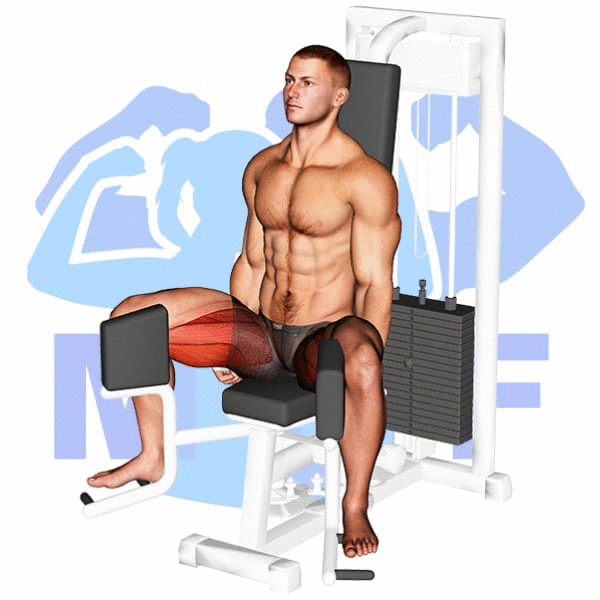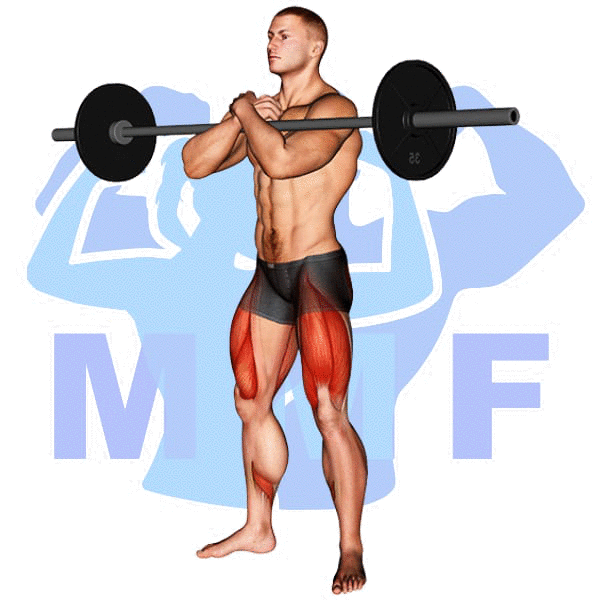If you’ve been struggling with strengthening your inner thighs, you’re not alone. Many gym-goers encounter difficulties when it comes to activating and targeting the muscles responsible for hip adduction. The classic exercise, the leg press, targets the quads and glutes, but often misses the mark on the adductors. This is where the lever seated hip adduction comes into play. Lack of familiarity with this exercise can be the culprit for underdeveloped inner thighs. But don’t worry, this post will guide you through proper form and execution to help you master the lever seated hip adduction and start seeing results in no time.
Lever Seated Hip Adduction (Machine) Summary
- Primary Muscles: Hip Adductors
- Secondary Muscles: None
- Equipment: Hip Adduction Machine
- Mechanics Type: Isolated
- Force: Pull
- Utility: Auxiliary

Lever Seated Hip Adduction (Machine) Instructions
- Position a lever machine with the seat at a comfortable height.
- Place the feet on the foot pads.
- Begin with the legs slightly open and the knees bent.
- Push the legs together and hold for a few seconds.
- Slowly return to the starting position.
- Repeat for desired number of repetitions.
Video Tutorial
Lever Seated Hip Adduction (Machine) Muscles
Target (Agonist)
- Adductors – Hip
Synergists
- None
Dynamic Stabilizers
- None
Stabilizers
- None
Antagonist Stabilizers
- None

Benefits of Lever Seated Hip Adduction (Machine)
The Lever Seated Hip Adduction (Machine) is an effective exercise for strengthening the Hip Adductors, which are a group of muscles that are responsible for moving the thigh inward and stabilizing the hips. This exercise helps to increase hip flexibility and strength, while helping to improve posture. It also helps to improve core stability, and can help to reduce the risk of lower back pain, as well as improving balance and coordination. Additionally, this exercise can help to reduce the risk of injury due to muscle imbalances. As a result, it is an important exercise to include in any strength training or fitness routine.
Tips for Performing Lever Seated Hip Adduction (Machine)
For the best results, you should include the Lever Seated Hip Adduction in your regular fitness routine. By doing this exercise regularly, you can increase your strength and stability in your hips and inner thighs, improve your balance, and reduce your risk of injury. To get the most out of this exercise, here are a few tips you can use.
- Maintain good posture while performing the exercise by keeping the back straight and shoulders pulled back. This will ensure that the exercise is targeting the correct muscles and reduce the risk of injury.
- Use a light to moderate weight to start with and increase the resistance as strength improves. This will help ensure that proper form is being used and reduce the risk of overworking the muscles.
- Make sure to squeeze the glutes at the top of the movement for maximum activation of the muscles being worked. This will help ensure that the desired results are achieved and provide a greater challenge for the muscles.
Benefits and Tips Video
Frequent Mistakes To Avoid
It is important to practice the Lever Seated Hip Adduction correctly in order to get the most out of this exercise and avoid injury. To ensure that you are getting the most out of your workout, it is important to avoid common mistakes that can arise when performing this exercise. In the following section, we will outline some of the most common mistakes to avoid when doing this exercise.
- Not focusing on proper form: Make sure to keep your back straight and your core engaged throughout the entire exercise. Poor form can lead to potential injury or decreased effectiveness of the exercise.
- Not adjusting the seat height: The seat height should be adjusted so that your knees are at 90 degree angles when performing the exercise. If the seat is too low, you may be unable to perform the exercise correctly, and if it is too high, you may experience discomfort or strain in your back and hips.
- Neglecting to stretch: Prior to performing the exercise, it is important to stretch the muscles in your hips and legs to ensure they are properly warmed up and reduce the risk of injury. Stretching also helps to increase flexibility and range of motion, making the exercise more effective.
Find More Machine Exercises Here
Variations and Complementary Exercises
This exercise is great for strengthening the hip muscles, but it’s always a good idea to incorporate other exercises into your routine. Here are some variations, complementary, or alternative exercises that work similar muscles as the Lever Seated Hip Adduction (Machine):
Cable Hip Adduction

Cable Hip Adduction is a complementary exercise to the Lever Seated Hip Adduction (Machine). It is an effective alternative exercise that allows you to work the same muscles while using your bodyweight as resistance. Cable Hip Adduction can be performed with a cable machine or with a resistance band. The cable machine allows for greater resistance, while the resistance band allows for more range of motion and is great for those with limited mobility. Cable Hip Adduction is a great way to add variety to your hip adduction exercises while still working the same muscles.
Sled Leg Wide Press

Sled Leg Wide Press is a great complementary or alternative exercise for the Lever Seated Hip Adduction Machine. It strengthens the hips, core, and glutes, and requires more balance and coordination than the machine. The Sled Leg Wide Press challenges the muscles to move the body weight through a full range of motion, which is beneficial for developing strength and power. This exercise also helps to improve coordination and balance, as well as strengthening the core, glutes, and hips. Additionally, it can be used to improve flexibility in the hips. Overall, Sled Leg Wide Press is an excellent way to supplement or replace the Lever Seated Hip Adduction Machine.
Barbell Sumo Squat

The Barbell Sumo Squat is a great alternative or complementary exercise for the Lever Seated Hip Adduction (Machine). This exercise targets the glutes, hamstrings, and quads and requires the use of a barbell. The wide stance of the sumo squat allows for an increased range of motion, which helps to strengthen the muscles and can improve hip mobility. This exercise is also beneficial because it can be performed with heavy loads and can be used to increase power and speed. Furthermore, because the Barbell Sumo Squat requires the use of a barbell, it can provide a more intense workout than the Lever Seated Hip Adduction (Machine).
Check Out These Top Machine Exercises
Find More Legs Exercises Here
Opposing Complementary Exercises
To further enhance the benefits of Lever Seated Hip Adduction (Machine), here are a few exercises that work the opposing muscle groups:
Lever Seated Hip Abduction (Machine)

The Lever Seated Hip Abduction (Machine) is a great exercise to complement the Lever Seated Hip Adduction (Machine). It focuses on the outer muscles of the hip, including the gluteus medius, gluteus minimus, and tensor fasciae latae. This exercise helps to strengthen the hip abductors, which are important for stabilizing the hips and supporting dynamic movements. It works the opposing muscle group of the hip adductors which are used for adduction and internal rotation of the hip joint. Working both of these muscle groups helps create a balanced hip strength and stability, which is essential for performing daily activities.
Dumbbell Single Leg Deadlift

The Dumbbell Single Leg Deadlift is a great complementary exercise to the Lever Seated Hip Adduction (Machine). It targets the opposing muscle group of the hip adductors by focusing on the glute and hamstring muscles. This exercise helps to increase balance and stability, while also improving hip mobility. The single leg deadlift focuses on unilateral strength development, which helps to create a balanced physique. By performing both exercises together, you will be able to improve your overall performance and strength.
Dumbbell Straight Leg Deadlift

The Dumbbell Straight Leg Deadlift is a great exercise to complement the Lever Seated Hip Adduction (Machine) as it targets the opposing muscle group. The deadlift works to strengthen the glutes, hamstrings, and lower back muscles. It is a great exercise for developing strength and power in the posterior chain while the Lever Seated Hip Adduction works to target the inner thigh muscles. Performing both exercises together creates a balanced workout that will help improve overall strength and balance in the lower body.
Master Your Hips With Lever Seated Adduction Today!
If you want to improve your overall lower body strength, then you need to focus on your hips. One of the best ways to do that is through lever seated hip adduction. This exercise is great for targeting your adductor muscles, which are responsible for bringing your thighs together. By mastering this exercise, you’ll not only strengthen your lower body, but you’ll also improve your overall balance and stability. Don’t be intimidated by the machine, with some guidance, you’ll see improvements in no time!
References: Wikipedia | ExRx.net | PubMed.gov | Comprehensive List of Legs Machine Exercises




